Body length: 13–19 mm.
Eyes: eye interommatidial setaeseta:
a sclerotized hair-like projection of the cuticle
absent, eye deeply emarginateemarginate:
notched at the margin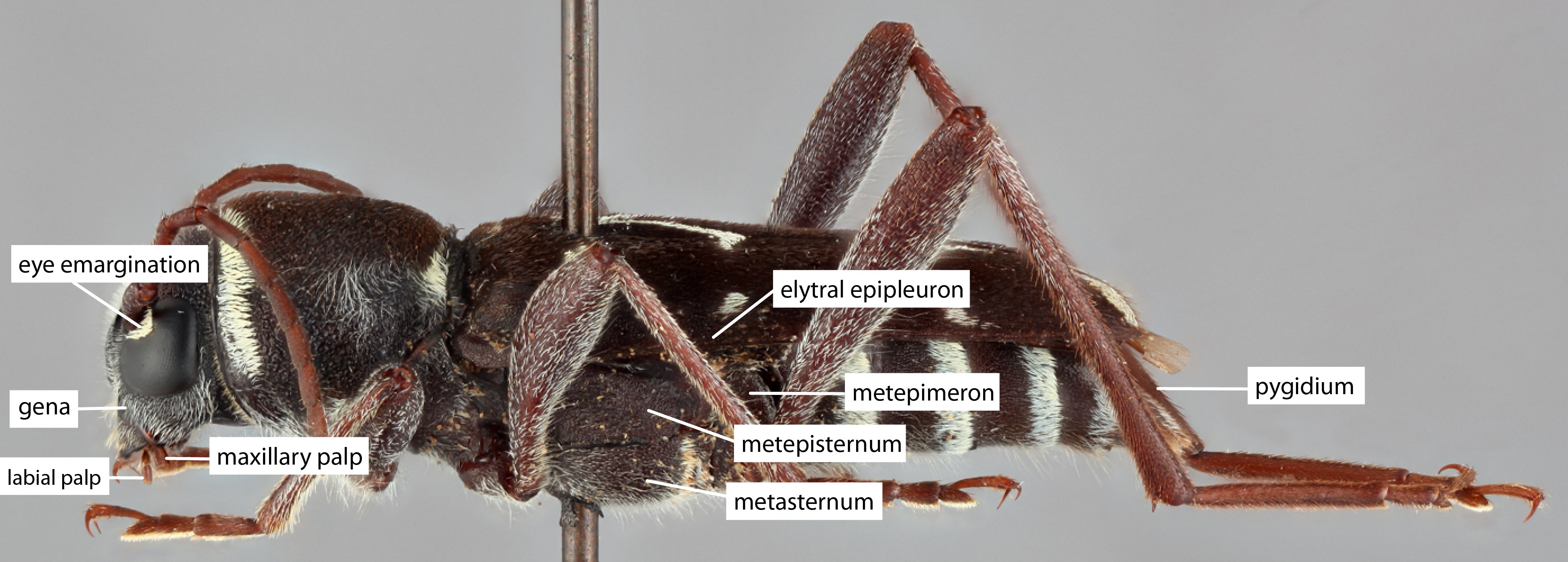 > half width, eye ommatidial density coarse.
> half width, eye ommatidial density coarse.
Antennaeantenna:
in larval and adult insects, paired segmented appendages, borne one on each side of the head, functioning as sense organs and bearing a large number of sensilla
: antennal length reaches between basebase:
the part of any appendage or structure that is nearest the body
and end of elytraelytron:
the leathery forewing of beetles, serving as a covering for the hind wings, commonly meeting opposite elytron in a straight line down the middle of the dorsum in repose
or reaching/surpassing end of body, antennal flagellar segments elongateelongate:
much longer than wide
, scapescape:
the first proximal segment of the antenna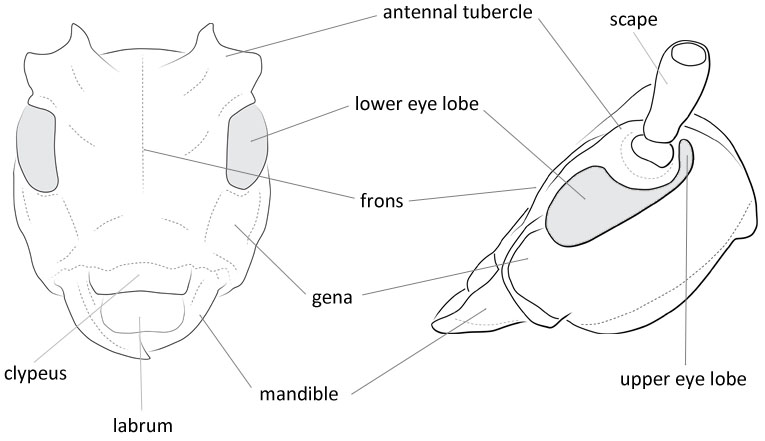 smooth/punctate at apexapex:
smooth/punctate at apexapex:
end of any structure distad to the base
, antennal scapescape:
the first proximal segment of the antenna ≥ segment 3.
≥ segment 3.
Pronotumpronotum:
the upper and dorsal part of the prothorax
: pronotumpronotum:
the upper and dorsal part of the prothorax
shape transversetransverse:
broader than long
, pronotumpronotum:
the upper and dorsal part of the prothorax
lateral armature acute spinespine:
a protuberance with an acute (sharp) distal end
.
Prosternum: prosternal processprosternal process:
a posterior extension of the prosternum between the coxae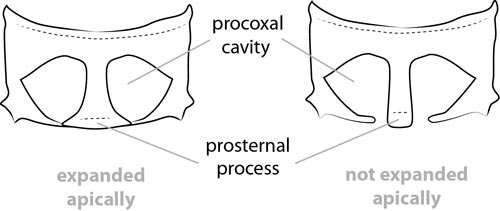 dilated at apexapex:
dilated at apexapex:
end of any structure distad to the base
, procoxal cavities open posteriorly.
Elytraelytron:
the leathery forewing of beetles, serving as a covering for the hind wings, commonly meeting opposite elytron in a straight line down the middle of the dorsum in repose
: elytral length reaching or close to end of abdomen, elytral apicesapex:
end of any structure distad to the base
rounded or truncatetruncate:
cut off squarely at the tip
or with tooth or spinespine:
a protuberance with an acute (sharp) distal end
, elytral color black or brown, elytral color pattern absent.
Legs: visible tarsomerestarsomere:
subdivision or article of the tarsus, usually numbering from two to five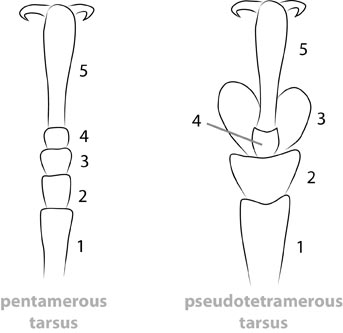 : 4, femora clavateclavate:
: 4, femora clavateclavate:
thickening gradually toward the tip
, protibial spursprotibial spur:
sclerotized spine(s) located at the distal tibia; can be single, double, or absent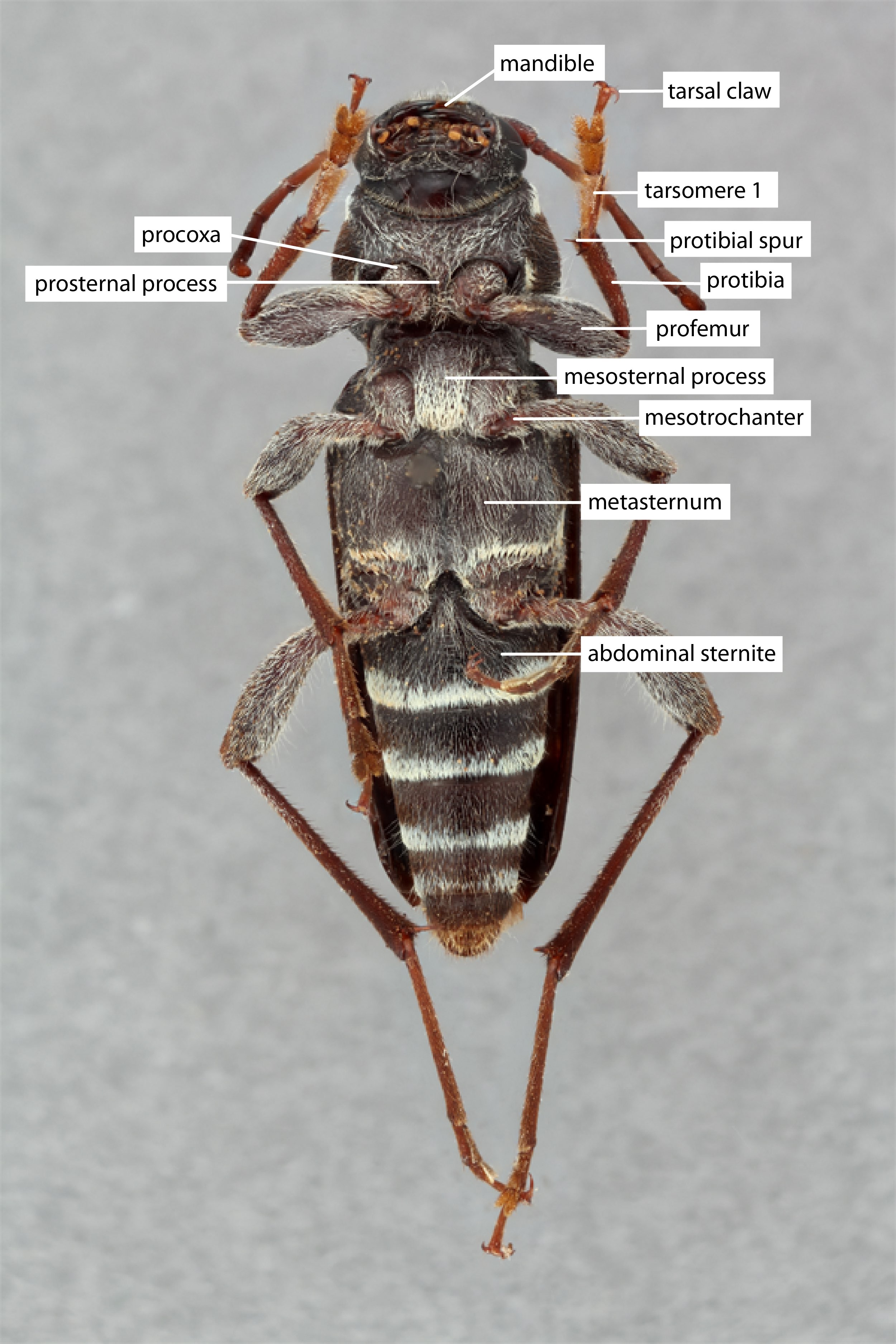 : 2, tarsal clawstarsal claw:
: 2, tarsal clawstarsal claw:
usually paired claws of the pretarsus, at the distal end of the leg simple.
simple.
Length 13–19 mm; body black or dark brown, shining; antennaeantenna:
in larval and adult insects, paired segmented appendages, borne one on each side of the head, functioning as sense organs and bearing a large number of sensilla
of medium length (S. piceus). Eyes with ommatidiaommatidium:
one of the visual elements of the compound eye
large and coarse, head constricted behind eyes; elytraelytron:
the leathery forewing of beetles, serving as a covering for the hind wings, commonly meeting opposite elytron in a straight line down the middle of the dorsum in repose
rounded over the abdomen; lateral sides of pronotumpronotum:
the upper and dorsal part of the prothorax
mostly with a distinct tubercletubercle:
a small knoblike or rounded protuberance
. Third antennal segment nearly as long as or only slightly shorter than segment 4. Last segment of maxillary palpus hatchet-like; head, pronotumpronotum:
the upper and dorsal part of the prothorax
and elytraelytron:
the leathery forewing of beetles, serving as a covering for the hind wings, commonly meeting opposite elytron in a straight line down the middle of the dorsum in repose
without dense punctuation, upper side therefore shining (Bense 1995Bense 1995:
Bense U. 1995. Longhorn Beetles. Illustrated Key to the Cerambycidae and Vesperidae of Europe Weikersheim: Margraf, 1995: 1–512, 1260 figs. ISBN 3-8236-1154-2).
Drymochares, Oxypleurus
Saphanus is distinguished by the partially serrateserrate:
sawlike, i.e., with notched edges like the teeth of a saw, e.g., serrate antennae
antennaeantenna:
in larval and adult insects, paired segmented appendages, borne one on each side of the head, functioning as sense organs and bearing a large number of sensilla
(articles 5–10) and a hatchet-like termial maxillary palpmaxillary palp:
an extension of the maxilla, in an anterior position within the mouth parts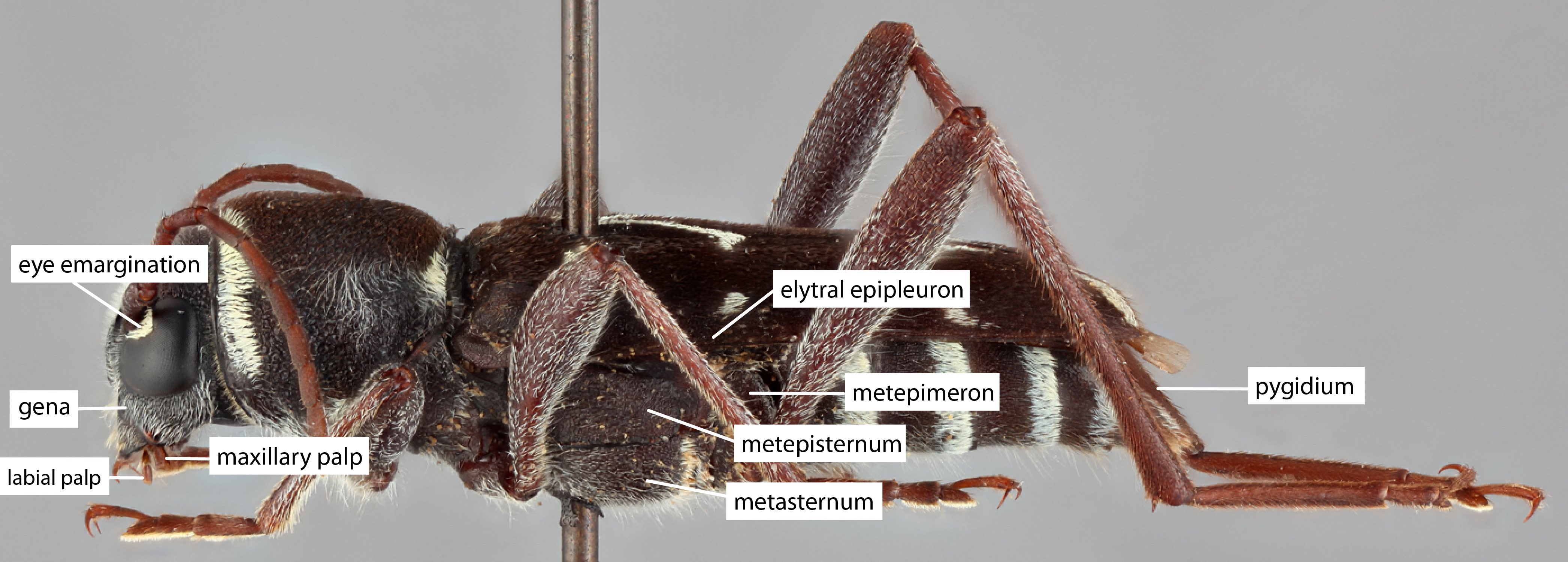 segment. The partially serrateserrate:
segment. The partially serrateserrate:
sawlike, i.e., with notched edges like the teeth of a saw, e.g., serrate antennae
antennaeantenna:
in larval and adult insects, paired segmented appendages, borne one on each side of the head, functioning as sense organs and bearing a large number of sensilla
, hindwings present, and comparatively narrower pro- and meso-sternal processes will differentiate from Drymochares.
Palearctic: Europe
broadleaf trees; Abies, Picea; Juniperus
2 species. Conifers and broadleaf: S. piceus.
Saphanus Audinet-Serville, 1834